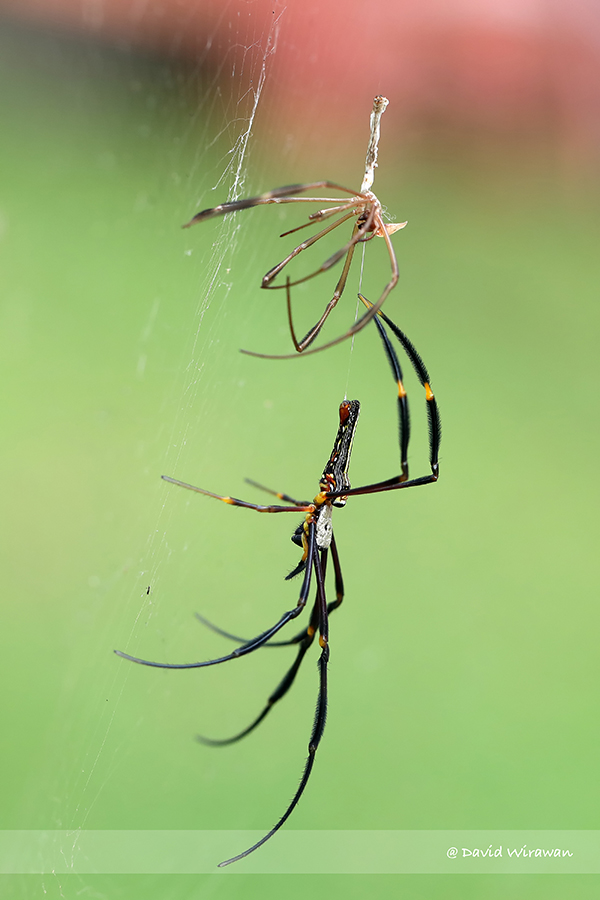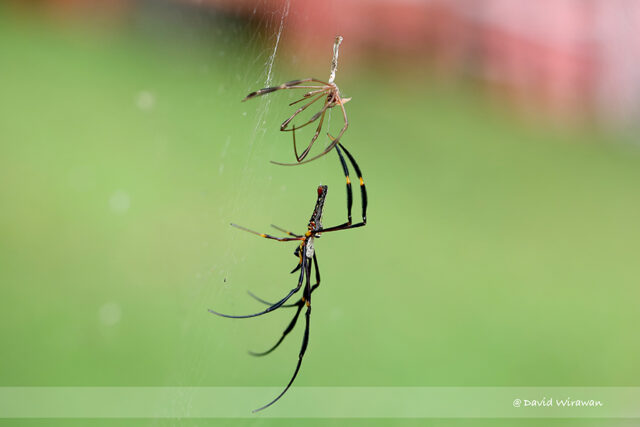During my insect photography walk, I spotted the Nephila Pilipes Spider and it’s old exoskeleton.
It’s the first time I saw the exoskeleton of spider and I try to get more information from Linden Higgins

Do all spiders molt?
Yes, as spiders need to grow, the way to grow is to shed their skin (exoskeleton)
The hard exoskeleton doesn’t change size and grow as the spider does. Therefore, spiders must shed their old exoskeletons to make room for new ones
The actual process of shedding an exoskeleton – called ecdysis – is very tricky for these spiders. First they grow the new exoskeleton inside of the old one. The new exoskeleton is chemically the same stuff as the old one, but it is not hardened yet and indeed is wrinkled like an egg carton to squeeze inside the old one, like having a large t-shirt on underneath a snug sweater. Some stretching will occur after the old skeleton is shed, but some of the new size must be there from the beginning.



With the new exoskeleton complete, the spider dissolves the living tissue between the old and new skeletons, leaving only nerve connections to the sensory organs – touch-sensitive hairs, eyes, and chemical sensory organs (taste and smell) located on the outside of the body. One day, the spider will hang from a thread on the orb web or under a leaf, disconnect those sensory organs, and pop the top on its cephalothorax (the body part with all the legs). The chemical changes involved in hardening off the new exoskeleton start as the old skin is shed. Spiders not infrequently die as their long legs harden and stick before they can be completely withdrawn from the old exoskeleton.
The new exoskeleton is very soft, during this time spider vulnerable to predators and other spiders. Once it hardens, the spider is ready to resume life as an insect-slaying assassin, bigger and more fearsome than ever before.
Source: https://www.uvm.edu/~lehiggin/Growth_by_molting.html
Linden Higgins
Department of Biology, University of Vermont














